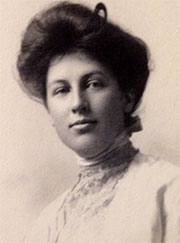I grew up in matriarchal home, so female independence was a strong influence in my childhood. Terms like “… a man should take care of the house maintenance.” or “… heavy lifting is a masculine task.” were never apparent in my adolescence. We did things for ourselves, so the need for a man’s aid didn’t seem as much of a necessity to me from a very young age. After I realized the social gender differences, I began to have fun with pushing beyond the means of my feminine role in society. I was a tomboy as a kid; cornrows in my hair and a hoodie slung over my broad shoulders was my daily wardrobe, it was simple and sporty. I had also made a promise to myself never to use my femininity as an excuse not to do something out of my predetermined societal role. But the odd stares from older women and men always intrigued me and it only got more enjoyable as I got older.
Nowadays it’s the small things that make me feel empowered to be a woman. Regardless of the grandeur in my life, the little things tend to add up; giving me a certain kind of confidence I didn’t realize was missing.
Concurrently, the thing that makes me the most empowered is going to the wholesale club (laugh all you want, but wholesale shopping can a very emotionally cleansing experience lol). There’s nothing like walking through those red framed sliding doors, with a platform truck trailing behind my extended arm. I walk into the space differently than any other day, as if my intentions are seeping through my pores. I’m walking, briskly, through the forest of aisles; because I only have one thing in mind and I won’t stop until I get it. As I approach the water pantry, I’m already mentally rolling up my sleeves; thinking of game plans, how many cases I need, and how I plan to maneuver the platform truck out of the tight space without colliding with other shopping carts. Once I roll the truck near the seemingly endless stacks of six-gallon water cases, I begin heaving each 50 pound box one by one. Chuckling at every man that offers his manly services and every other guy trying to take two boxes at time, vying to match my intensity and significantly failing at the attempt. Eight boxes later, I roll the 400 pound load towards the registers; feeling confident with every stride and every glance.
So what inspires you? What makes you feel empowered to be the phenomenal woman that you are in your everyday life? Or guys, what makes you feel motivated by that special woman in your life? Feel free to share in the comments below!
Happy National Women’s History Month, everyone! Enjoy the upcoming holidays!







